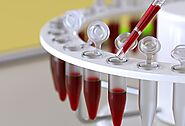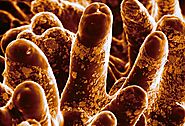-
About
- About Listly
- Community & Support
- Howto
- Chrome Extension
- Bookmarklet
- WordPress Plugin
- Listly Premium
- Privacy
- Terms
- DMCA Copyright
- © 2010-2025 Boomy Labs

Listly by Umbrella Health Care Systems
Coeliac disease (British English) or celiac disease (American English) is a long-term autoimmune disorder, primarily affecting the small intestine, where individuals develop intolerance to gluten, present in foods such as wheat, rye and barley.Classic symptoms include gastrointestinal problems such as chronic diarrhoea, abdominal distention, malabsorption, loss of appetite, and among children failure to grow normally. This often begins between six months and two years of age.Non-classic symptoms are more common, especially in people older than two years. There may be mild or absent gastrointestinal symptoms, a wide number of symptoms involving any part of the body, or no obvious symptoms. Coeliac disease was first described in childhood;however, it may develop at any age It is associated with other autoimmune diseases, such as Type 1 diabetes mellitus and Hashimoto's thyroiditis, among others.
Coeliac disease is caused by a reaction to gluten, a group of various proteins found in wheat and in other grains such as barley and rye.Moderate quantities of oats, free of contamination with other gluten-containing grains, are usually tolerated.The occurrence of problems may depend on the variety of oat. It occurs more often in people who are genetically predisposed.Upon exposure to gluten, an abnormal immune response may lead to the production of several different autoantibodies that can affect a number of different organs.In the small bowel, this causes an inflammatory reaction and may produce shortening of the villi lining the small intestine (villous atrophy). This affects the absorption of nutrients, frequently leading to anaemia.
Diagnosis is typically made by a combination of blood antibody tests and intestinal biopsies, helped by specific genetic testing.Making the diagnosis is not always straightforward.About 10% of the time, the autoantibodies in the blood are negative, and many people have only minor intestinal changes with normal villi.People may have severe symptoms and they may be investigated for years before a diagnosis is achieved. As a result of screening, the diagnosis is increasingly being made in people who have no symptoms. Evidence regarding the effects of screening, however, is not sufficient to determine its usefulness.While the disease is caused by a permanent intolerance to gluten proteins,it is distinct from wheat allergy, which is much more rare

Celiac disease is a digestive disorder that occurs in reaction to gluten, a protein found in rye, barley, wheat, and hundreds of foods made with these grains. The body's immune system reacts to the gluten and causes damage to the intestine. Celiac disease, also known as celiac sprue or gluten-sensitive enteropathy, is fairly common. An estimated 1.8 million Americans have the disorder and need to follow a gluten-free diet.
https://www.umbrellamd.com/e-visit

Symptoms of celiac disease can vary from mild to severe. Some people have no symptoms, although they still are developing intestinal damage. Celiac disease is sometimes misdiagnosed as irritable bowel syndrome, Crohn's Disease, or gastric ulcers. Digestive symptoms may include:

For some people, celiac disease causes an itchy, blistering rash known as dermatitis herpetiformis. It may begin with an intense burning sensation around the elbows, knees, scalp, buttocks, and back. Clusters of red, itchy bumps form and then scab over. It often first occurs in the teenage years and is more common among men than women. The rash usually clears with a gluten-free diet but can also be treated with medication.
https://www.umbrellamd.com/e-visit

Wheat is a staple in Western cultures, so many common foods contain enough gluten to aggravate celiac disease -- breads, crackers, muffins, pasta, pizza, cakes, and pies. Fried chicken can be off limits, thanks to the breading. Chinese seitan and Japanese udon noodles come from wheat. Rye and barley also contain gluten, so pumpernickel bread, barley soup, and even beer can cause problems for those with celiac disease.
https://www.umbrellamd.com/e-visit

In people with celiac, the body's immune system is triggered by gluten in food. Antibodies attack the intestinal lining, damaging, flattening, or destroying the tiny hair-like projections (villi) in the small bowel. Damaged villi can't effectively absorb nutrients through the intestinal wall. As a result, fats, proteins, vitamins, and minerals get passed through the stool. Over time, this can lead to malnutrition.
https://www.umbrellamd.com/e-visit

Because the symptoms of celiac disease can be varied, it is often undiagnosed or misdiagnosed. A blood test can detect high levels of certain antibodies that suggest that you have celiac disease. If the results are negative, your doctor may order additional testing, possibly including an analysis of your DNA to help get an accurate diagnosis.
https://www.umbrellamd.com/e-visit

A biopsy of the small intestine can confirm the findings of the blood test. An endoscope is placed through the mouth and stomach into the small intestine and a small amount of tissue is removed. Celiac disease damages or destroys the small, hairlike protrusions in the intestine.
https://www.umbrellamd.com/e-visit

Up to 60% of children and 41% of adults with celiac disease do not have symptoms. With a damaged intestinal lining, they may not be absorbing nutrients properly and are at risk of malnutrition. People with celiac disease have a higher chance of developing osteoporosis, infertility, and some neurological problems.
https://www.umbrellamd.com/e-visit

There is no cure for celiac disease, but strictly avoiding gluten will halt the symptoms and allow the intestine to repair itself. In fact, you may feel better within days of removing gluten from your diet. The most common foods to avoid include pasta, baked goods, and cereal, but you must avoid even small amounts of gluten that could be in other products.
https://www.umbrellamd.com/e-visit

People with celiac may also benefit from vitamin and mineral supplements if the condition has caused a deficiency. Important nutrients that may need supplementing include iron, calcium, vitamin D, zinc, copper, folic acid, and other B vitamins. Be sure to check with your health care provider for the right amount.
https://www.umbrellamd.com/e-visit

A small percentage of people with celiac don't respond to a gluten-free diet. These people may be prescribed steroids to be taken orally or by injection into a vein for short-term use to curb the immune system.
https://www.umbrellamd.com/e-visit

Umbrella Health Care Systems provide complete solution for health related problems.
https://www.umbrellamd.com/